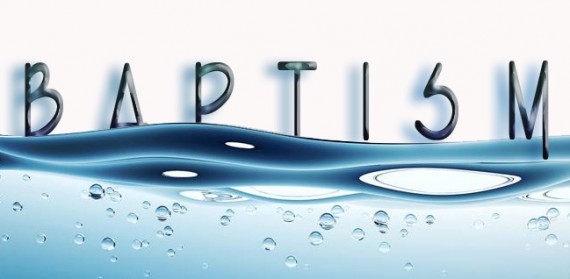
We have previously seen that Jews practiced baptism, and Jesus underwent this Jewish baptism. What does all this mean, and how did Christian baptism develop?
Jewish Rebirth through Baptism
In Judaism, baptism in water represents a death to the past and a new birth to a completely different future.
It symbolizes death, burial, and new birth. The coming up out of the water did not symbolize resurrection (for many Jewish people did not believe in the resurrection), but of being reborn out of water, like a newborn babe.
This partly explains why Jesus is incredulous that Nicodemus does not understand about being “born again” (John 3:10). Baptism as a means of being “born again by water” was a common practice among Judaism. Entering the water was a way of identifying oneself with the purity of a newborn infant, and indicated that a person was turning away from something in their previous life and making a fresh start in a new direction.
 Most everyone within Judaism understood this symbolism. So when someone got baptized, and other people observed or heard about it, they would naturally go ask the person what had changed in their life. If you were a Jewish person and you heard that you neighbor got baptized, you would want to know what they were “dying” to. You would also begin to watch what their “born again” life looked like. You would see if the change they professed really did take place, or if they slipped back into their previous habits and old ways.
Most everyone within Judaism understood this symbolism. So when someone got baptized, and other people observed or heard about it, they would naturally go ask the person what had changed in their life. If you were a Jewish person and you heard that you neighbor got baptized, you would want to know what they were “dying” to. You would also begin to watch what their “born again” life looked like. You would see if the change they professed really did take place, or if they slipped back into their previous habits and old ways.
Christian Baptism
A lot of this should sound very similar to the instruction you received from your pastor or your church about the symbolism of baptism. This is no surprise, since Christian baptism was derived from Jewish baptism.
With this in mind, we are now in a position to look at some key Scriptures on baptism.
 But in doing so, we must remember everything we have seen so far. Just because a Scripture talks about “baptism,” does not mean that it has water baptism in view. Remember, the definition of “baptism” is “being overwhelmed, overcome, or fully identified” with something or someone else.
But in doing so, we must remember everything we have seen so far. Just because a Scripture talks about “baptism,” does not mean that it has water baptism in view. Remember, the definition of “baptism” is “being overwhelmed, overcome, or fully identified” with something or someone else.
So in looking at the Scripture passages on baptism, we will first try to determine in context what kind of immersion or re-identification is in view.
If the context is unclear in this regard, we will assume that since Judaism gave birth to Christianity, the baptism in question is a Jewish-style baptism, complete with being dipped, or immersed, in water, and in which a person makes a public profession of a radical change in their life by symbolically dying to the past and being born again into a new, fresh, and different future.
Scriptures on Baptism
We will be looking at these passages: Matthew 28:19-20, Mark 16:16; several Scriptures on baptism from the Book of Acts, Romans 6, Colossians 2:12, and 1 Peter 3:21.
Are there any other Scriptures you would like me to touch on in the following posts? Let me know in the comments below.




There is a correction in 2 Peter 3:21.. The exact is in 1 Peter 3:21.
Thanks! I just fixed it.